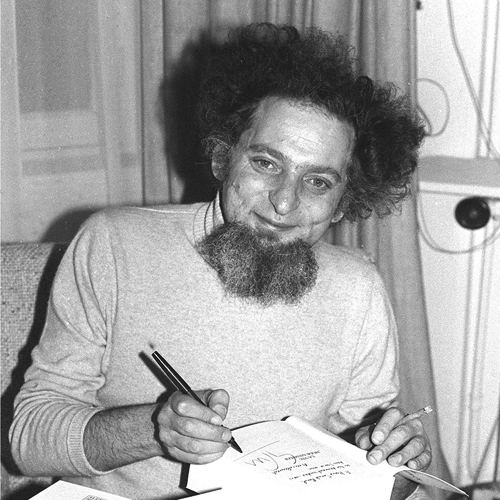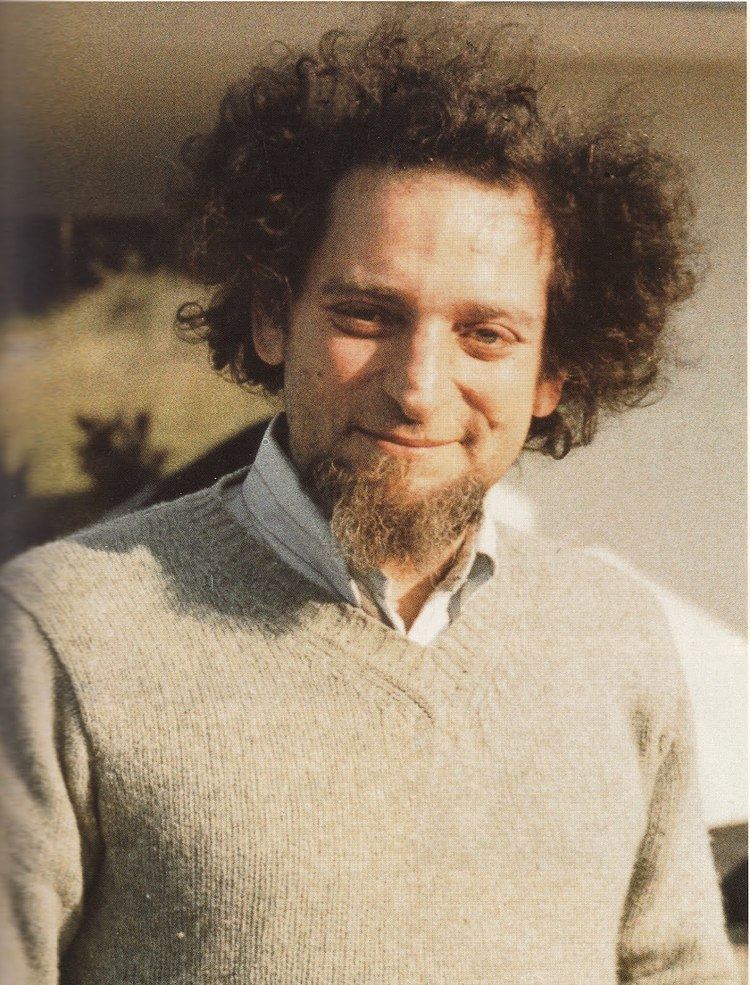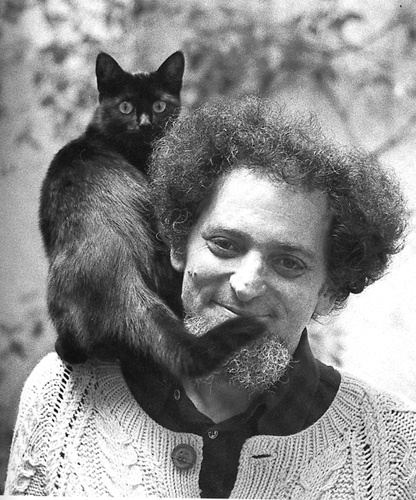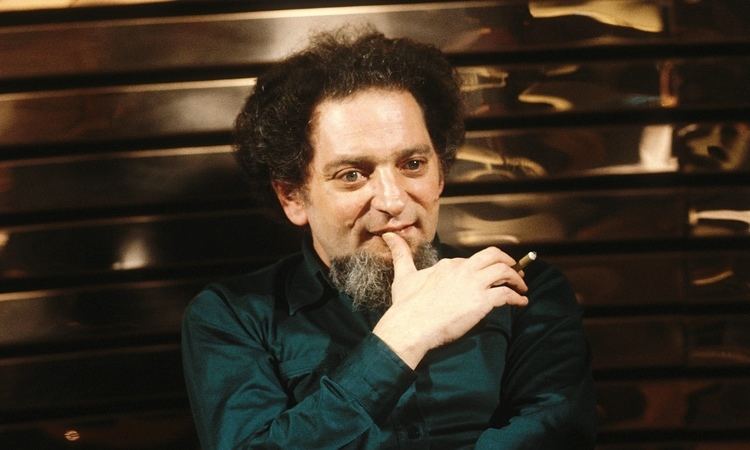Language French Name Georges Perec | ||
 | ||
Born 7 March 1936Paris, France ( 1936-03-07 ) Occupation Novelist, filmmaker, essayist Spouse Paulette Petras (m. 1960–1982) Movies The Man Who Sleeps, Serie noire, Ellis Island Tales Parents Icek Judko, Cyrla (Schulewicz) Peretz Books Life a User's Manual, A Void, Things: A Story of the Sixties, W - or the Memory of Childhood, A Man Asleep Similar People | ||
French novel la disparition by georges perec slow reading
Georges Perec ([peʁɛk, pɛʁɛk]; March 7, 1936 – March 3, 1982) was a French novelist, filmmaker, documentalist, and essayist. He was a member of the Oulipo group. His father died as a soldier early in the Second World War and his mother was murdered in the Holocaust, and many of his works deal with absence, loss, and identity, often through word play.
Contents
- French novel la disparition by georges perec slow reading
- Georges Perec and the Lipogram
- Early life
- Career
- Work
- Honours
- Books
- Films
- References

Georges Perec and the Lipogram
Early life

Born in a working-class district of Paris, Perec was the only son of Icek Judko and Cyrla (Schulewicz) Peretz, Polish Jews who had emigrated to France in the 1920s. He was a distant relative of the Yiddish writer Isaac Leib Peretz. Perec's father, who enlisted in the French Army during World War II, died in 1940 from untreated gunfire or shrapnel wounds, and his mother perished in the Nazi Holocaust, probably in Auschwitz sometime after 1943. Perec was taken into the care of his paternal aunt and uncle in 1942, and in 1945 he was formally adopted by them.
Career

Perec started writing reviews and essays for La Nouvelle Revue française and Les Lettres nouvelles, prominent literary publications, while studying history and sociology at the Sorbonne. In 1958/59 Perec served in the army as a paratrooper (XVIIIe Régiment de Chasseurs Parachutistes), and married Paulette Petras after being discharged. They spent one year (1960/1961) in Sfax, Tunisia, where Paulette worked as a teacher; these experiences are reflected in Things: A Story of the Sixties, which is about a young Parisian couple who also spend a year in Sfax.

In 1961 Perec began working at the Neurophysiological Research Laboratory in the unit's research library funded by the CNRS and attached to the Hôpital Saint-Antoine as an archivist, a low-paid position which he retained until 1978. A few reviewers have noted that the daily handling of records and varied data may have had an influence on his literary style. In any case, Perec's work on the reassessment of the academic journals under subscription was influenced by a talk about the handling of scientific information given by Eugene Garfield in Paris and he was introduced to Marshall McLuhan by Jean Duvignaud. Perec's other major influence was the Oulipo, which he joined in 1967, meeting Raymond Queneau, among others. Perec dedicated his masterpiece, La Vie mode d'emploi (Life a User's Manual) to Queneau, who died before it was published.

Perec began working on a series of radio plays with his translator Eugen Helmle and the musician Philippe Drogoz in the late 60s; less than a decade later, he was making films. His first work, based on his novel Un Homme qui dort, was co-directed by Bernard Queysanne, and won him the Prix Jean Vigo in 1974. Perec also created crossword puzzles for Le Point from 1976 on.
La Vie mode d'emploi (1978) brought Perec some financial and critical success—it won the Prix Médicis—and allowed him to turn to writing full-time. He was a writer in residence at the University of Queensland, Australia, in 1981, during which time he worked on the unfinished 53 Jours (53 Days). Shortly after his return from Australia, his health deteriorated. A heavy smoker, he was diagnosed with lung cancer. He died the following year in Ivry-sur-Seine, only forty-five years old; his ashes are held at the columbarium of the Père Lachaise Cemetery.
Work
Many of Perec's novels and essays abound with experimental word play, lists and attempts at classification, and they are usually tinged with melancholy.
Perec's first novel Les Choses: Une Histoire des Années Soixante (Things: A Story of the Sixties) (1965) was awarded the Prix Renaudot.
Perec's most famous novel La Vie mode d'emploi (Life a User's Manual) was published in 1978. Its title page describes it as "novels", in the plural, the reasons for which become apparent on reading. La Vie mode d'emploi is a tapestry of interwoven stories and ideas as well as literary and historical allusions, based on the lives of the inhabitants of a fictitious Parisian apartment block. It was written according to a complex plan of writing constraints, and is primarily constructed from several elements, each adding a layer of complexity. The 99 chapters of his 600-page novel, move like a knight's tour of a chessboard around the room plan of the building, describing the rooms and stairwell and telling the stories of the inhabitants. At the end, it is revealed that the whole book actually takes place in a single moment, with a final twist that is an example of "cosmic irony". It was translated into English by David Bellos in 1987, and has since been classified as a major example of postmodern fiction.
Perec is noted for his constrained writing. His 300-page novel La disparition (1969) is a lipogram, written without ever using the letter "e". It has been translated into English by Gilbert Adair under the title A Void (1994). The silent disappearance of the letter might be considered a metaphor for the Jewish experience during the Second World War. Since the name "Georges Perec" is full of "e"s, the disappearance of the letter also ensures the author's own "disappearance". His novella Les revenentes (1972) is a complementary univocalic piece in which the letter "e" is the only vowel used. This constraint affects even the title, which would conventionally be spelt Revenantes. An English translation by Ian Monk was published in 1996 as The Exeter Text: Jewels, Secrets, Sex in the collection Three. It has been remarked by Jacques Roubaud that these two novels draw words from two disjoint sets of the French language, and that a third novel would be possible, made from the words not used so far (those containing both "e" and a vowel other than "e").
W ou le souvenir d'enfance, (W, or the Memory of Childhood, 1975) is a semi-autobiographical work which is hard to classify. Two alternating narratives make up the volume: one, a fictional outline of a remote island country called "W", at first appears to be a utopian society modeled on the Olympic ideal, but is gradually exposed as a horrifying, totalitarian prison much like a concentration camp. The second narrative is a description of Perec's own childhood during and after World War II. Both narratives converge towards the end, highlighting the common theme of the Holocaust.
"Cantatrix sopranica L. Scientific Papers" is a spoof scientific paper detailing experiments on the "yelling reaction" provoked in sopranos by pelting them with rotten tomatoes. All the references in the paper are multi-lingual puns and jokes, e.g. "(Karybb & Szyla, 1973)".
David Bellos, who has translated several of Perec's works, wrote an extensive biography of Perec: Georges Perec: A Life in Words, which won the Académie Goncourt's bourse for biography in 1994.
The Association Georges Perec has extensive archives on the author in Paris.
In 1992 Perec's initially rejected novel Gaspard pas mort (Gaspard not dead), which was believed to be lost, was found by David Bellos amongst papers in the house of Perec's friend Alain Guérin. The novel was reworked several times and retitled Le Condottière and published in 2012; its English translation by Bellos followed in 2014 as Portrait of a Man after the 1475 painting of that name by Antonello da Messina.
Honours
Asteroid no. 2817, discovered in 1982, was named after Perec. In 1994, a street in the 20th arrondissement of Paris was named after him, rue Georges-Perec. The French postal service issued a stamp in 2002 in his honour; it was designed by Marc Taraskoff and engraved by Pierre Albuisson. For his work, Perec won the Prix Renaudot in 1965, the Prix Jean Vigo in 1974, the Prix Médicis in 1978. He was featured as a Google Doodle on his 80th birthday.
Books
The most complete bibliography of Perec's works is Bernard Magné's Tentative d'inventaire pas trop approximatif des écrits de Georges Perec (Toulouse, Presses Universitaires du Mirail, 1993).
-
-
